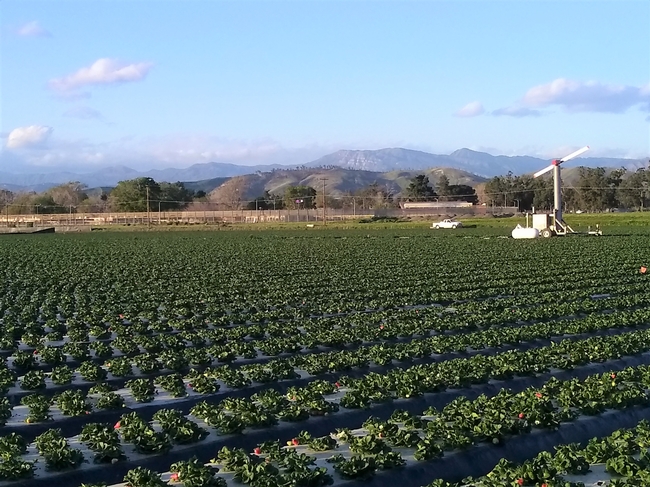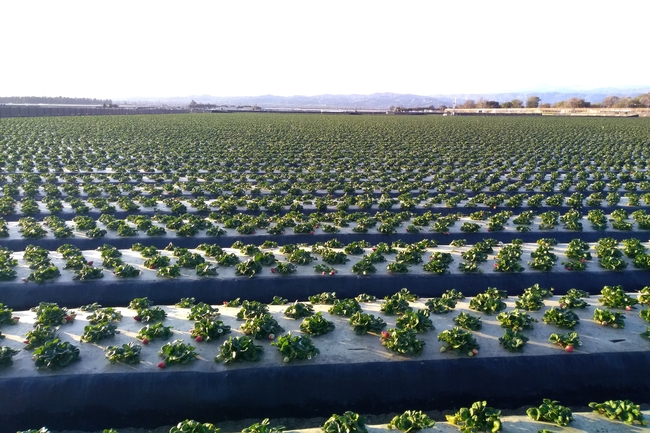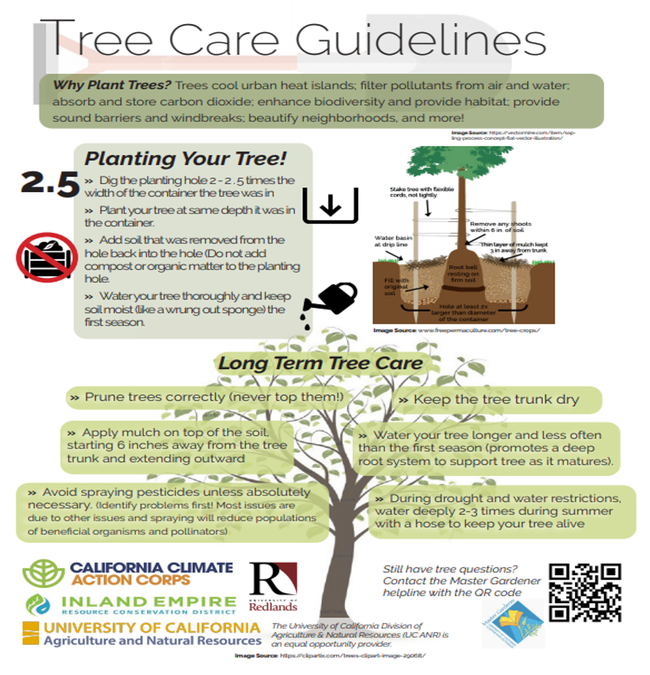
Posts Tagged: gardener
Agricultural research and education center moving to new site in Ventura County
UC Hansen Research and Extension Center to expand capacity at Camarillo location
The University of California Hansen Agricultural Research and Extension Center – the site of popular school field trips, 4-H programs, a UC Master Gardener demonstration garden, and numerous research trials on crops and landscape plants – is moving to a new location on the west side of Camarillo. The center was established through an endowment bequeathed to the UC by Saticoy farmer Thelma Hansen, who sought to support university research and extension activities benefiting Ventura County.
For the past 25 years, Hansen REC has been located on the historic Faulkner Farm in Santa Paula. At 27 acres, Hansen REC was the smallest of the nine RECs across the state operated by UC Agriculture and Natural Resources; in 2019, UC ANR leadership decided a larger property was needed to expand the center's capacity. The Faulkner Farm was sold in March 2021, but a portion was leased back to the UC to sustain its programs until a new location was identified.
In December 2022, the UC acquired a 114-acre farm property in Camarillo to serve as Hansen REC's new home. Moving structures and equipment from Faulkner Farm will take place over the next six months. Public programs at the new location are on hold until seismic retrofitting and other building upgrades are completed. A new research and educational facility also will be built, with an estimated opening date in 2027 or 2028.
“Our planning committee looked for a site on the Oxnard Plain that is representative of the coastal agriculture environment and conducive to research on Ventura County's high-value crops, such as strawberries,” said Annemiek Schilder, Hansen REC director. “We also sought a location with diverse soil types, access to sufficient irrigation water, and a low risk of flooding – and we're pleased that this Camarillo property meets most of our search criteria.”
Of the approximately 104 cultivable acres, 28 are certified organic, which will allow researchers to study organic as well as conventional crop production methods, Schilder noted. She said another bonus of the new location is its proximity to California State University, Channel Islands and the Rodale Institute California Organic Center, which are both potential partners for future research and a student organic farm on site.
Initial plans for the new Hansen REC facility include offices, conference rooms, laboratories, greenhouses, a demonstration kitchen, and indoor and outdoor education areas. The center will aim to be water-efficient and energy-neutral, relying on solar panels for much of its energy usage. The UC Cooperative Extension Office in Ventura is also slated to move to the new facility.
“We fully expect Hansen REC to become a vibrant research and education hub that provides science-based solutions and is responsive to the needs of agricultural, rural and urban communities and the environment in Ventura County,” said Glenda Humiston, UC vice president for agriculture and natural resources. “We're excited to expand current programming while bringing in new educational opportunities, such as the UC Master Food Preserver and Master Beekeeper programs.”
Fall is a Great Time to Plant Trees
Fall is a great time to plant trees in our urban landscapes. Temperatures are cooler than summer and trees adjust to transplanting much better than during the heat of summer.
Why trees? Trees reduce surface temperatures of asphalt and other dark impervious surfaces by over 60 degrees F in inland cities during spring and summer. They also reduce energy usage and costs, enhance habitat and pollinator populations, absorb and store carbon dioxide, provide oxygen for our subsistence, reduce erosion, reduce glare and noise, add beauty to our neighborhoods, and enhance mental and emotional health.
I am appreciative to UCCE San Bernardino County Master Gardener trainee Alex Shippee for his graphic design wizardry, making a drab publication on planting trees inviting and appealing to read.
Have more questions about your trees? Contact the UC Cooperative Extension Master Gardener tree helpline in San Bernardino County. 22trees4tomorrow@gmail.com or our general telephone helpline at (909)387-2182 or email mgsanbern@ucanr.edu where your gardening questions can also be addressed. (You will also reach this website by following the QR code link above.) We also have this handout available in Spanish.
"Trees for Tomorrow Start Today" Master Gardener Program Application for San Bernardino County Residents
Applications Now Being Accepted for the University of California Cooperative Extension Master Gardener Program “Trees for Tomorrow Start Today” Project.
University of California Cooperative Extension (UCCE) San Bernardino County is currently recruiting adults (18 and over) who are interested in becoming volunteers for our "Trees for Tomorrow" project. Complete training is provided online through a 50-hour Master Gardener training class taught by subject matter experts. Master Gardener volunteers will provide research-based information on the selection and care of heat, drought, and pest resistant trees and help our non-profit partners and community leaders enhance tree canopy cover in our most vulnerable neighborhoods. (To date, we are proud to have partnered with the Inland Empire Resource Conservation District, CA Climate Action Fellows and many non-profit organizations, communities, ESRI, and others to give away over 600 trees in the last year!)
Applications to become a UCCE Master Gardener volunteer for this project are open through August 31, 2022. UCCE Master Gardener “Trees for Tomorrow” Volunteer Application link: http://ucanr.edu/u.cfm?id=287
Questions about the application process or the volunteer opportunity? Contact UCCE Area Environmental Horticulturist Janet Hartin at jshartin@ucanr.edu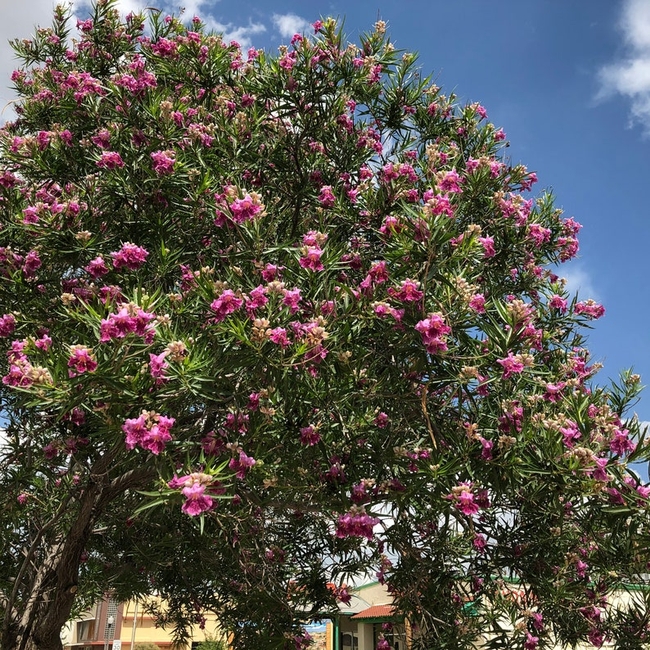
Why volunteer for this project? We are facing unprecedented times due to climate change and urban heat islands increasing temperatures in our communities. One of the solutions to a "cooler, greener, tomorrow" is through tree planting and proper selection and long-term care of heat, drought, and pest resistant trees.
Why trees? Shade produced by a single tree can reduce surface temperatures of asphalt and other impervious surfaces by up to 65 degrees F. Trees also lower air temperatures; enhance pollinator and wildlife habitat; absorb pollutants; reduce energy use and related costs (homes, offices, vehicles); beautify neighborhoods; absorb and store carbon dioxide; and provide many other ecosystem and societal benefits.
You can make a difference like never before enhancing tree canopy cover in our neighborhoods. Do you want to learn more about what UCCE Master Gardeners do for San Bernardino County residents and communities, find out what upcoming events they are hosting, or have them answer your horticulture questions Here's your pot of gold: https://mgsb.ucanr.edu/
We are looking forward to hearing from you!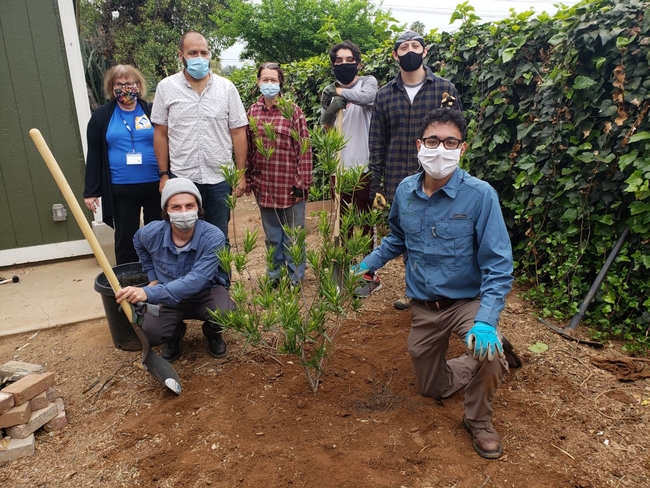
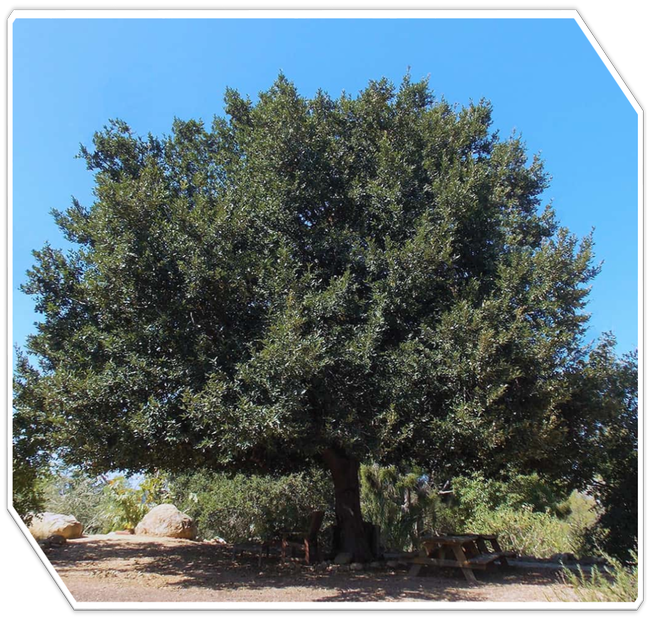
MG of SB County Tree
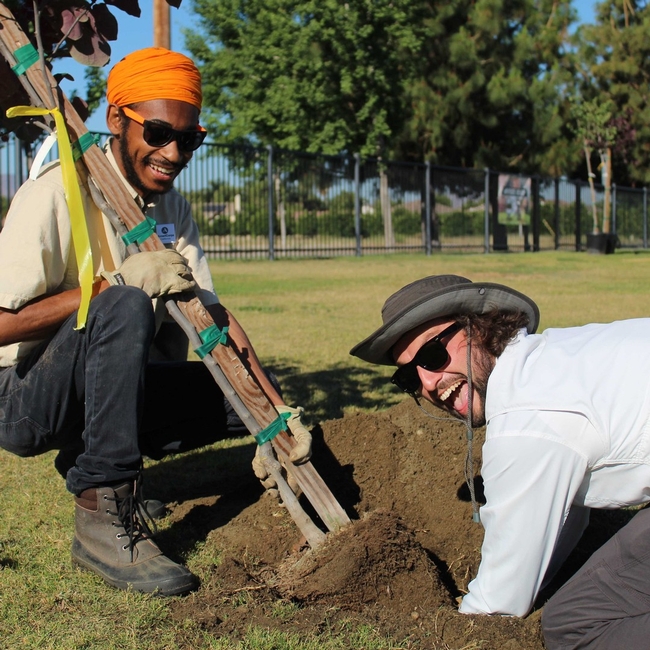
Trees for tomorrow 2021 Redlands Sports Park
Drought Resources for Keeping Trees Alive
University of California Cooperative Extension Drought Resources To Keep Your Plants Alive
"Trees Come First Under Drought and Water Restrictions"
Keeping Plants Alive Under Drought and Water Restrictions (English) https://anrcatalog.ucanr.edu/pdf/8553.pdf
Keeping Plants Alive Under Drought and Water Restrictions (Spanish) https://anrcatalog.ucanr.edu/pdf/8628.pdf
Prioritizing Trees During Drought and Water Restrictions (5 minute Youtube)
https://www.youtube.com/watch?v=CTKLlJgdLVk
Tips to Keep Your Landscape Trees Alive Under Drought https://ucanr.edu/b/~IjC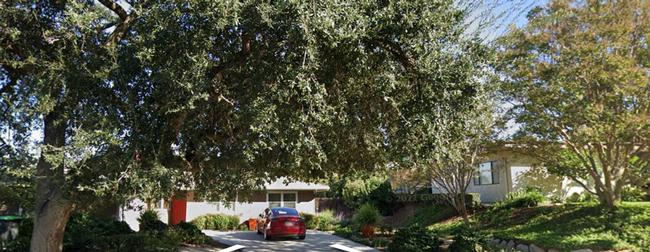
Landscape Tree Irrigation to Maximize Tree Health, Benefits, and Beauty https://ucanr.edu/b/~YjA
Landscape Tree Irrigation 101 https://ucanr.edu/b/~UjA
Top 10 Ways to Conserve Water in Your Landscape and Garden https://ucanr.edu/b/~tTD
Asphalt and Synthetic Turf are Superheating our Cities (in Desert Sun newspaper) https://www.desertsun.com/story/opinion/contributors/valley-voice/2022/04/09/coachella-valleys-asphalt-synthetic-lawn-heat-islands-reach-170/9515857002/
Use of Graywater in Urban Landscapes in California https://anrcatalog.ucanr.edu/pdf/8536.pdf
Need More Help? Speak to a UC Cooperative Extension Master Gardener in Your County of Residence. 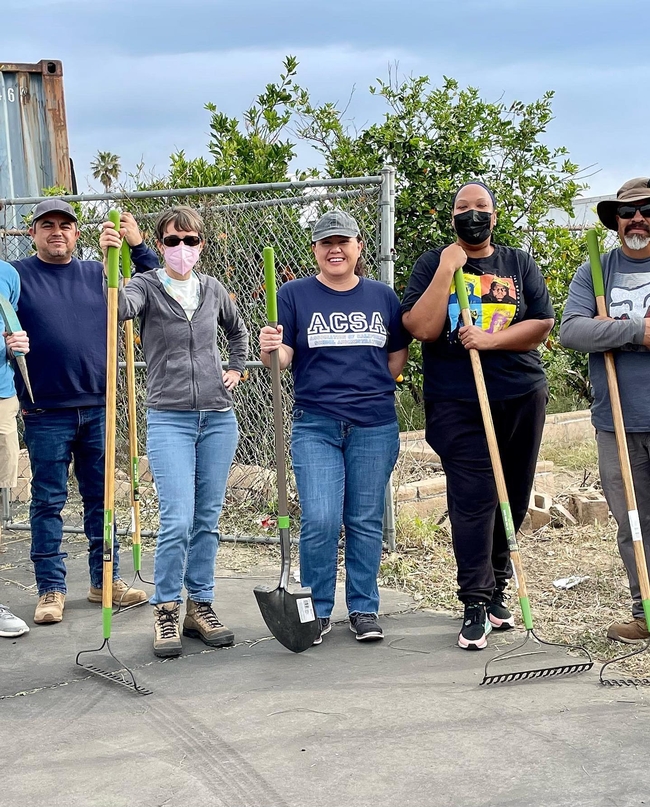
The Top Ten Ways to Conserve Water in Your Landscape and Garden in San Bernardino County
1. Select drought-resistant plants that grow well in your climate zone and microclimate (sun, shade, etc.). Try these search engines:
SelecTree: A Tree Selection Guide (calpoly.edu) Plant Search Database
Plant Search Database - Water Use Classification of Landscape Species (WUCOLS IV) (ucanr.edu)
For inland San Bernardino County: Home - Inland Valley Garden Planner
2. ‘Hydrozone': Place plants with similar water needs (very low, low, medium, high) together and water the hydrozones on different valves (or, if hand watering, water plants requiring the most water longer but not necessarily more often than other plants).
3. Make sure your irrigation system is operating properly (pressure, spacing, no weeds around heads, no broken parts, etc.).
4. Irrigate based on species and seasonal water needs (highest in summer) and soil type (sandy loam, clay loam, etc.).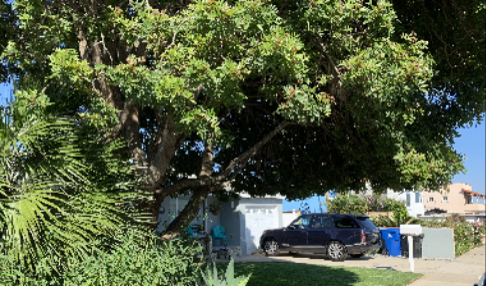
5. Irrigate slightly below the current root zone depth of your plants to encourage deep rooting into cooler soil: - 6”-8” for annuals, perennials, and turf - 8”- 1' for shrubs - 1' or deeper for trees
6. Water early in the morning when soil evaporation is minimal.
7. Control weeds. They compete with your garden plants for water.
8. Spread and maintain 2-4” of mulch around garden plants and trees (3-4” for wood chips, 2” for pebbles, decomposed gravel, etc.) keeping it a few inches away from tree trunks.
9. Avoid over-fertilizing. Too much nitrogen creates weak growth and the need for more water.
10. If you have a lawn and still want to keep it, water based on the UC ANR 'Lawn Watering Guide': http://ucanr.org/freepubs/docs/8044.pdf
Contact a trained University of California Cooperative Extension (UCCE) Master Gardener in San Bernardino County for more help! mgsanbern@ucanr.edu (fastest!) or: (909)387-2182 (leave a message for a return phone call)
Redlands trees

